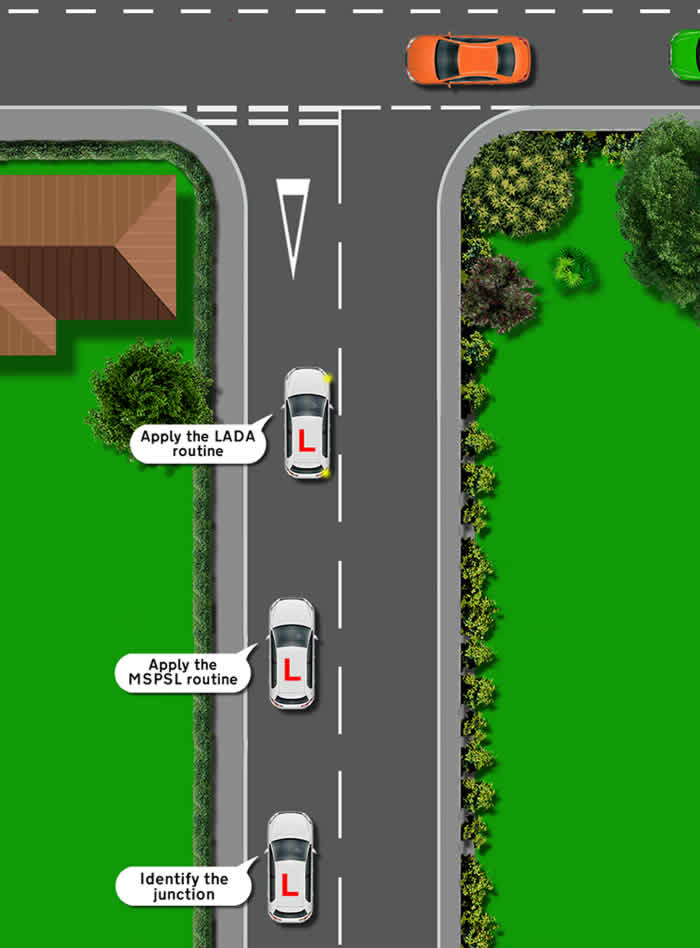The number one cause of driving test failures every year is at junctions. Failures are often due to excessive speed, lack of observation or a combination of both. Here we explain how to correctly approach T-junctions, along with common problems that result in a test failure.
Identify the T-junction
During the driving test, the examiner will either give you verbal directions, for example, approaching a T-junction, they will say ‘At the end of the road, turn right’. Or, during the independent phase of the driving test, you’ll be required to follow road signs or directions from a sat-nav.
In order that you approach the T-junction at an appropriate speed, you’ll first need to identify it. Identifying the T-junction allows you to know how far ahead it is and what type of junction it is. The type of T-junctions you’ll need to identify are:
- Unmarked: No road markings or signs.
- Marked – Give Way: Has give way road markings, may or may not have a give way sign.
- Marked – Stop junction: Has a stop line on the road and will have a stop sign.
- Controlled: The T-junction is controlled by traffic lights.
By identifying the T-junction, it allows you to know how far ahead it is and to adjust your speed accordingly. But by also knowing type of junction that you’re approaching means you’ll be more prepared for what you need to do when you get there.

Apply the MSPSL Driving Routine
After identifying the T-junction, at the appropriate distance from the junction, we carry out the MSPSL routine. MSPSL stands for Mirror, Signal, Position, Speed and Look. The MSPSL routine at T-junctions will be covered in the next tutorial.
Apply the LADA Driving Routine
The LADA driving routine stands for Look, Assess, Decide and Act. LADA follows on as an extension from the MSPSL routine; the ‘L’ in MSPSL is the beginning of the LADA routine.
For the LADA routine, this is where we are going to Look and Assess whether the T-junction is ‘open’ or ‘closed’. An open T-junction means that you can clearly see traffic on the major road you intend on joining and a closed T-junction means the major road is obscured by objects such as buildings, trees, fences, bushes etc. Determining whether the T-junction is open or closed allows you to further adjust your speed as you approach.
We then Decide that the T-junction is:
- Closed and therefore the action (Act) is that we are going to continue to slow down and prepare to stop.
- Open, but has traffic on the major road meaning that our action is to slow down and prepare to stop.
- Open, there is no traffic affecting us on the major road meaning our action is to merge into the new road without the need to stop.
Correctly Approaching T-junctions for the Driving Test
As mentioned, the number one reason for driving test fails year-on-year is due to test candidates approaching junctions at an inappropriate speed and lack of observations. A lack of appropriate observations often occurs due to the test candidate approaching the junction too quickly.
All junctions are different, so in terms of using the correct speed for approaching a T-junction, the ‘identifying the T-junction‘ and the ‘LADA‘ routine are the most critical phases. If these are carried out properly, you’ll approach the T-junction at the correct speed, giving you plenty of time for effective observations and also giving you time to react accordingly.